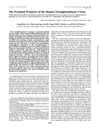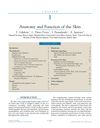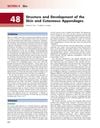Epithelial Barrier Function: Assembly and Structural Features of the Cornified Cell Envelope
August 2002
in “
BioEssays
”
TLDR The cornified cell envelope forms a protective barrier in skin and hair, using specific proteins and lipids to maintain effectiveness.
The review article discussed the assembly and structural features of the cornified cell envelope (CE) in terminally differentiating stratified squamous epithelial cells. The CE is a specialized protective barrier composed of structural proteins cross-linked by transglutaminase enzymes into an insoluble macromolecular assembly. The assembly process involves various proteins, with a selection of over 20 different proteins used in the final stages to meet tissue-specific requirements. The article also highlighted that certain proteins might be upregulated in response to genetic defects or tissue injury to maintain barrier effectiveness. Additionally, in the epidermis and hair fiber cuticle, a lipid layer covalently attached to the proteins provides essential water barrier properties. The review provided insights into the CE structure, its assembly mechanism, and related disorders causing defective barriers.


